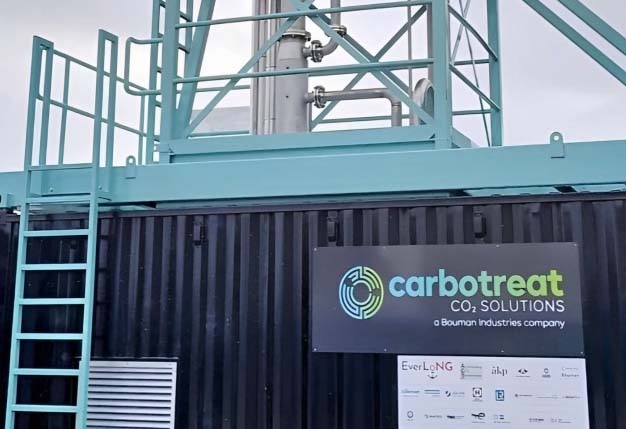Dutch company Conoship is participating in the EverLoNG project, which aims to encourage the uptake of Ship Based Carbon Capture (SBCC) by demonstrating its use on LNG-fuelled ships.
The research will optimise the technology and consider how best to integrate it into existing ship and port infrastructure. The interlinking studies support the development of full-chain carbon capture, utilisation and storage (CCUS) networks. The initiative also contributes to developing regulatory frameworks for the safe and effective use of SBCC technology in the shipping sector.
As a research partner, Conoship contributes to all six Work Packages but is taking the lead in Work Package 3 (WP3), considering the Impact of SBCC on ship infrastructure. In this Work Package, we are studying the shipboard integration of SBCC technology and its flexibility for large-scale use in multiple scenarios. One of the important aspects of SBCC is the heat required for the reboiler process of the capture system. In the EverLoNG project, this heat is supplied to the capture system by recovering waste heat from the exhaust gas. Depending on the engine type, this can pose some challenges to the heat integration between the engine and the capture system.
Efficient heat supply to the reboiler from exhaust gas waste heat can only be achieved by exhaust gases with temperatures in excess of about 140°C, because of the temperature at which the reboiler operates. Typically, four-stroke dual-fuel engines running on gas have high exhaust gas temperatures (in the order of 350°C to 450°C), and the recoverable exhaust gas heat enables CO₂ capture rates of 90%. However, for two-stroke engines the situation is different. The exhaust gas temperatures of large two-stroke engines are typically in the order of 200°C, which is much closer to the minimum 140°C that we need for the reboiler. Recovering sufficient heat from the exhaust gases is not trivial here and requires optimisation.
An example: in a two-stroke engine with an exhaust gas temperature of 208°C, an exhaust gas flow of 8.1 kg/kWh and specific fuel consumption of 134 g/kWh, the exhaust gas heat that can be used for the reboiler is then around 580 kJ per kWh of energy produced by the engine. This is enough heat for the CO₂ capture system to capture 45% of the engine’s CO₂ emissions at best. To increase the capture rate, one solution could be to install an extra (gas or oil-fired) boiler to supply the required heat for the CO₂ capture process. This will however cause a significant increase in fuel consumption of the ship, so a different approach is taken.
To increase the recoverable heat from the exhaust gas, the configuration of the same two-stroke engine can be modified to achieve higher exhaust gas temperatures, at the cost of a small efficiency loss. This is often done for engines that have an SCR (NOₓ reduction) system fitted in the exhaust line, due to the high temperatures required by the SCR catalyst.
Now, considering the same two-stroke engine as before but configured for a higher exhaust gas temperature of 250°C, the corresponding exhaust gas flow and specific fuel consumption are 7.5 kg/kWh and 135 g/kWh, respectively. Because of the higher temperature, more heat can be recovered from the exhaust gas, enabling a capture rate of 67%.
So, through a relatively small modification to the engine configuration, the capture rate is increased from 45% to 67% at the expense of a relatively small (less than 1.5%) increase in fuel consumption of the engine.
Besides the heat balance, the effect of ship motion on CO₂ capture is crucial in SBCC’s development pathway. The technology brings additional challenges, such as deck space, extra weight, an impact on the LNG vaporisation process and onboard heat management. These are further key research questions being investigated by WP3.
With the insights developed in the EverloNG project, the project partners are prepared to implement CO₂ capture on LNG vessels on a large scale, both as new builds as well as retrofits. Conoship is convinced that shipboard CO₂ capture is one of the most promising ways to reduce CO₂ emissions from shipping on a large scale.



